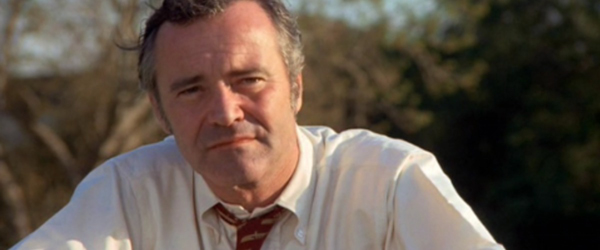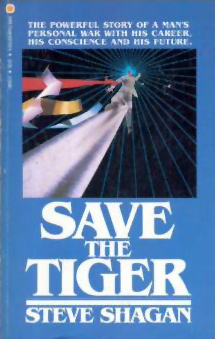
In the early 1970s I was struggling to keep alive the high-tech company I had founded in 1964. I also saw for the first time Save the Tiger, a film based on Steve Shagan’s novel of the same name, and immediately knew that I had discovered a soul mate—someone who had challenges and experiences similar to my own. The movie starred Jack Lemmon, who ultimately won an Oscar for his role as Harry Stoner, the struggling CEO of a manufacturer of women’s clothes.
 Having survived for fifteen years, Harry and his partner Phil, an accountant, are in the final stages of bringing out a new line women’s dresses, and desperately need financing. They don’t have enough collateral to get the bank financing they need, so they are exploring other alternatives, including torching a warehouse that they own for the insurance proceeds. In addition to his financial challenges, preserving this “house of cards” requires him to (1) mediate the conflict between his creative designer, Rico, and his old Russian cutter, Meyer; (2) coordinate the liaison between a large buyer who expects to be “serviced,” and the prostitute he has on retainer; (3) cope with recurring PTSD episodes resulting from combat in World War II; and (4) prepare for the IRS’s audit of books that they both know have been cooked.
Having survived for fifteen years, Harry and his partner Phil, an accountant, are in the final stages of bringing out a new line women’s dresses, and desperately need financing. They don’t have enough collateral to get the bank financing they need, so they are exploring other alternatives, including torching a warehouse that they own for the insurance proceeds. In addition to his financial challenges, preserving this “house of cards” requires him to (1) mediate the conflict between his creative designer, Rico, and his old Russian cutter, Meyer; (2) coordinate the liaison between a large buyer who expects to be “serviced,” and the prostitute he has on retainer; (3) cope with recurring PTSD episodes resulting from combat in World War II; and (4) prepare for the IRS’s audit of books that they both know have been cooked.
For me, what most impressed me about the story is the extent to which Shagan’s portrait of Harry Stoner is the small businessperson archetype, a character determined to keep a company alive at all costs, despite continual harassment. Driven to succeed, this character gets up every day, shoulders the responsibilities of the entire enterprise, and has to choose the “least worst” option from among unattractive alternatives. He or she dreams of the deal or season that will pay off and fund retirement, travel, and an easier life of charitable activities. Yet Harry knows that any hope of retirement is a fantasy.
One of my favorite scenes is the one that resonates with me most strongly. Here, at a meeting with Harry to resolve his conflicts with Rico, Meyer offers to resign:
Harry loosened his tie and unbuttoned his top button, “I don’t want you out.”
The old man moved around the table. “What do you want, Harry? Come on, tell me. I’m an old stone, I don’t talk. Tell me. What is it you want?”
Harry leaned over and picked up a small square of black faille. He thought about the old man’s question, looked up at the neon tubing and said, “More.”
“You mean money?”
“No . . .”
“What?”
“Another season.”
The old man smiled. “And that’s everything? Another season?
“That’s right. It is. The average life in this business is seven months. We’ve survived for fifteen years—that’s something. Godammit, it’s everything.”
It’s eerie; I can remember making very similar statements on a number of occasions.
What makes Save the Tiger such a good read is:
- The characters are well drawn, especially Harry, Phil, Meyer, and Margo (the prostitute Harry has on retainer). Their actions are plausible.
- The setting—the Los Angles Garment District, Hollywood and Beverly Hills—is vividly described. You are there!
- The plot is very well developed. It grabs hold of you and won’t let you go.
- The story will evoke a feeling of recognition in any businessperson who reads it. You can’t help identifying with Harry.
For these reasons, Save the Tiger is an example of outstanding business fiction. I strongly recommend it.